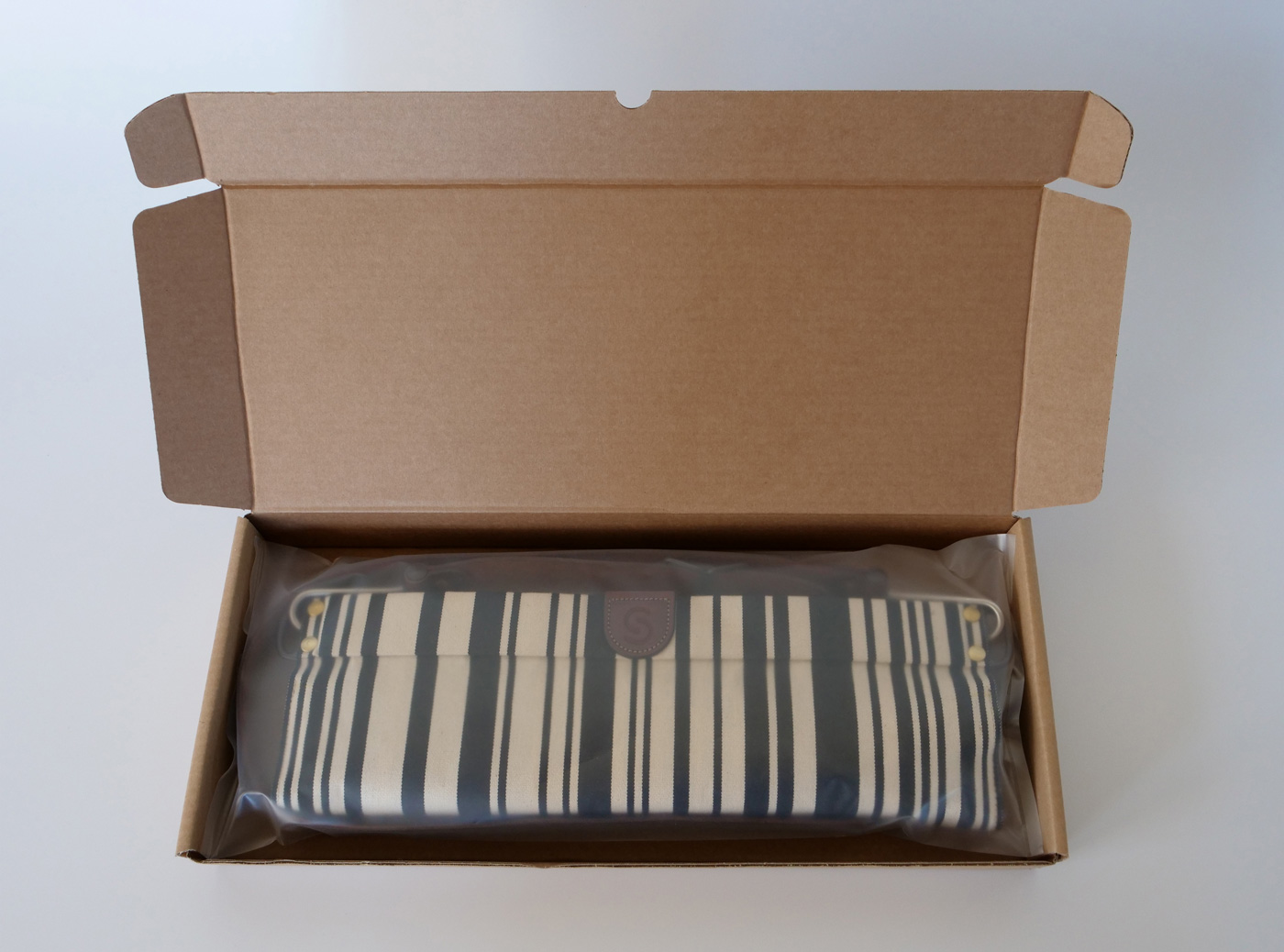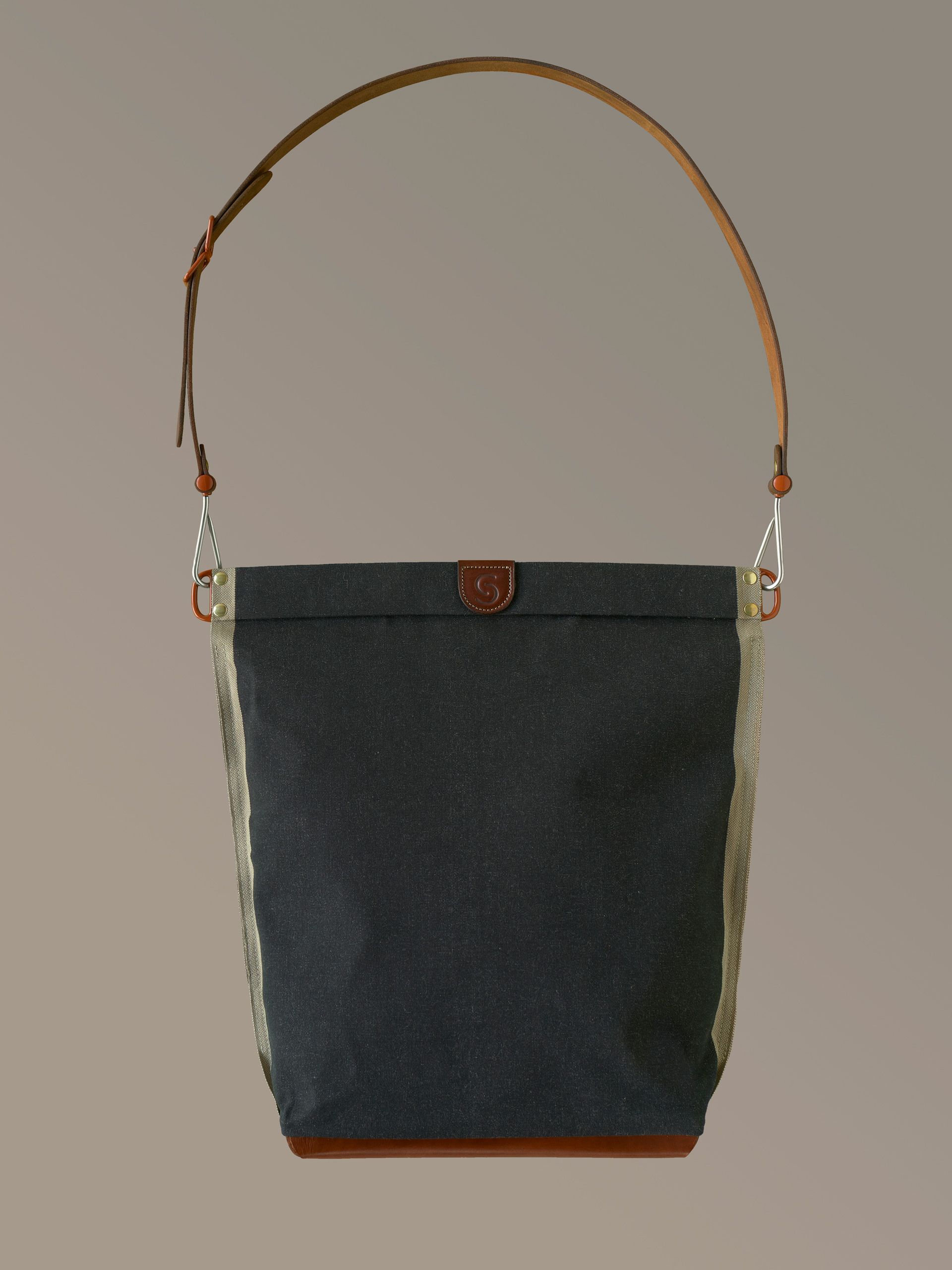Knapsack* is a lightweight bag with a unique closing system designed by Christoph Seyferth. The bag is adjustable in size while wearing. Along the bag‘s rim a spring steel strip is embedded inside the sturdy canvas. Through the strip the bag curls smoothly around the waist and back: No zip, no buttons, no velcro. The flexible strip closes the bag, and sits snugly against the body, merging with your silhouette.
Besides, you can make the bag smaller while wearing it: Through flipping its top the bag can be made smaller. This requires some practicing, but feels like a natural action after some time.
The bag consists of durable canvas, combined with sturdy saddle leather. The stiff leather protective bottom guards your valuable stuff.
* The word ‘Knapsack’ has its roots in the German language, and harks back to the Middle Ages. The knapsack was a simple bag made out of cloth or leather which was hung from the shoulders, so that the hands are free when you walk. “Knap” meant “eat” in old German. When holding food it became a Knap-Sack.
Knapsack
K1C4 Large
Description
Knapsack* is a lightweight bag with a unique closing system designed by Christoph Seyferth. The bag is adjustable in size while wearing. Along the bag‘s rim a spring steel strip is embedded inside the sturdy canvas. Through the strip the bag curls smoothly around the waist and back: No zip, no buttons, no velcro. The flexible strip closes the bag, and sits snugly against the body, merging with your silhouette.
Besides, you can make the bag smaller while wearing it: Through flipping its top the bag can be made smaller. This requires some practicing, but feels like a natural action after some time.
The bag consists of durable canvas, combined with sturdy saddle leather. The stiff leather protective bottom guards your valuable stuff.
* The word ‘Knapsack’ has its roots in the German language, and harks back to the Middle Ages. The knapsack was a simple bag made out of cloth or leather which was hung from the shoulders, so that the hands are free when you walk. “Knap” meant “eat” in old German. When holding food it became a Knap-Sack.
Size chart
Knapsack is available in three sizes. There are no inner pockets: The user adds pouches or holders for smaller items according to one’s own wishes. Big things can be stored easily, such as towels or groceries.
Choosing an available size relates to the wished-for capacity, and not to a person’s length. If you only want to take your laptop, the smallest size might be adequate enough. The way you carry the Knapsack according to your length can be adjusted with the leather strap.

Materials
Knapsack is made of durable canvas, which is made by a traditional weaving mill in the French Pyrenees. A German tanner is the purveyor of the vegetably dyed leather parts. All other parts are produced within the EU as well, and assembled in CUS’ own workshop, supported by a group of international design students: They contribute to careful and smooth production and distribution. Every season there will be temporarily a new color added to the available standard colors and patterns.
Both leather and canvas are natural products. Therefore they need special care: leather can dry out, and needs to be treated just like shoes. Use colorless fat to protect the leather bottom and carrying strap. The canvas can be cleaned with lukewarm water and soft soap. Don’t use aggressive or abrasive cleaning products. Other parts of Knapsack are maintenance-free. As with other natural materials, outside use and sunlight will affect the color of the canvas and leather. Knapsack’s natural materials will gain visual quality through use and age. If you have been walking through a downpour with Knapsack, just let it dry naturally, and don’t put it on any heating source!

Packaging
Knapsack will be securely packed and shipped, 750 grams, 51 cm x 21 cm x 5,5 cm.

